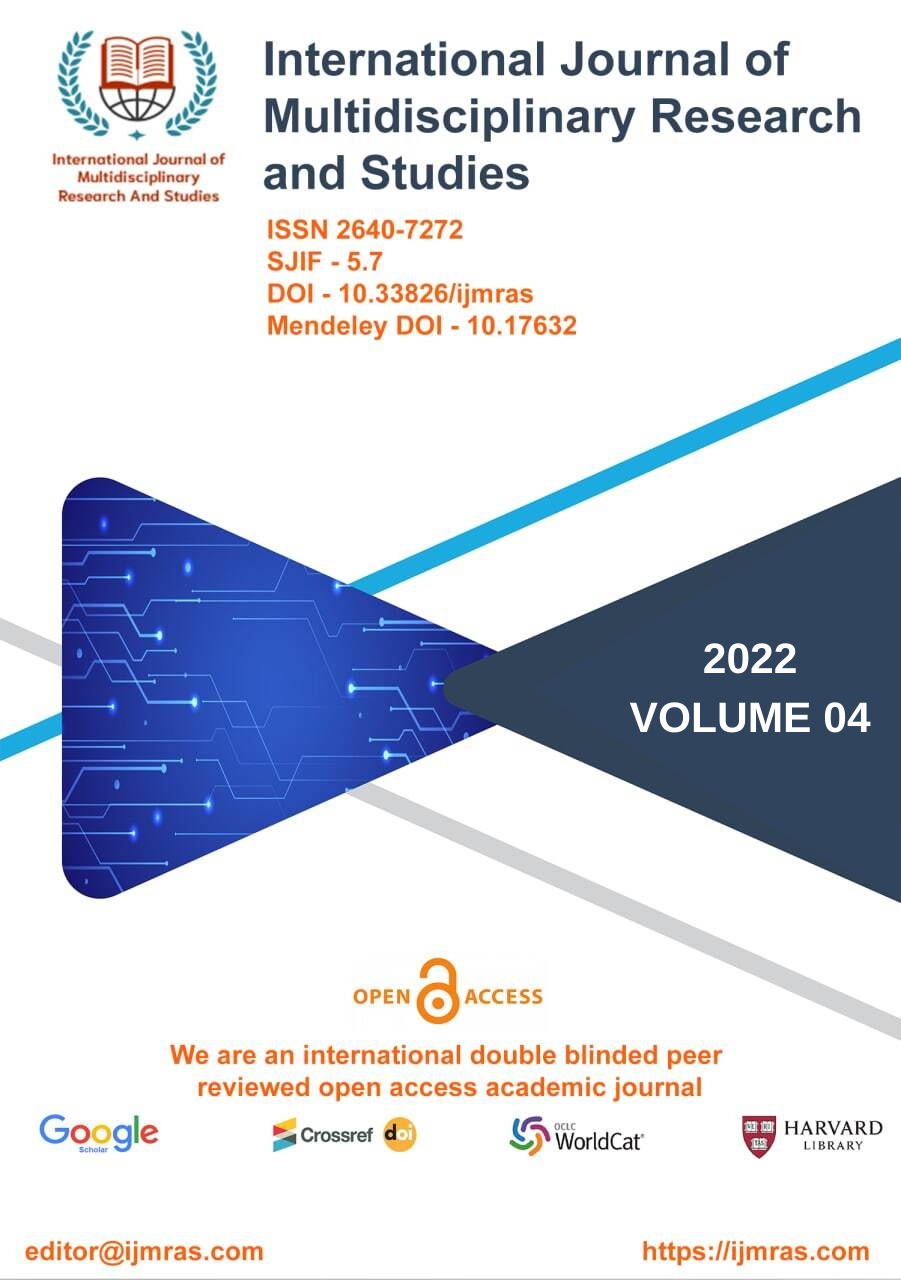RULES OF VERBAL INTERACTION WITH CRIMINALS/EYEWITNESSES IN COURT TO FOSTER COOPERATION.
Abstract
The purpose of this chapter is to provide practical guidance on the protection of persons who come into contact with HROs in the context of human rights monitoring and fact-finding activities (hereinafter referred to as cooperating persons), and who may face threats or be subjected to reprisals as a result of that contact with HROs. interaction. The actions carried out by HROs when they are present in human rights field presences are the primary emphasis of this chapter as well as the Manual as a whole.
Keywords
HROs, practical Guidance, primary emphasisHow to Cite
References
Davis, J. P. (2007). The forensic identification of forensic CCTV images of unfamiliar faces. Unpublished Ph.D. Thesis, Goldsmiths, University of London.
Home Office (2004). Police and Criminal Evidence Act 1984 (s.60 (1)(a), s.60A(1) and s.66(1)). Codes of Practice A-F. Revised Edition. London: The Stationery Office.
Lomax, S.C. (2005). Who killed Jill Dando? The case of Barry George, A shocking miscarriage of justice. Hertford: Kempton Marks
McCahill, M. (2003). Media representations of visual surveillance. In P. Mason (Ed.), Criminal visions: Media representations of crime and justice (pp192-213). Cullompton, Devon: Willan.
Meissner, C. A., & Brigham, J. C. (2001). Thirty years of investigating the own-race bias in memory for faces: A meta-analytic review. Psychology, Public Policy, and Law, 7, 3-35.
Nardo, D. (2007). DNA Evidence (Crime Scene Investigations). Melbourne, Australia: Cengage Learning.
Police and Criminal Evidence Act 1984 (s.60(1)(a), s.60(1) and s.66(1)) codes of practice (2005). Retrieved December 27, 2007
Report of the Royal Commission on Police Powers and Procedure (1929). Retrieved December 27, 2007 from http://www.bopcris.ac.uk/bopall/ref8782.html
Rozenberg, J. (2007). Judge cleared of ‘flashing’ young commuter. Telegraph on line, 13.06.2007.. Retrieved on December 27, 2007 from:
Valentine, T. Harris, N., Colom Piera, A., & Darling, S. (2003). Are police video identifications fair to African-Caribbean suspects? Applied Cognitive Psychology, 17, 459-476
Valentine, T., Pickering, A., & Darling, S. (2003). Characteristics of eyewitness identification that predict the outcome of real lineups. Applied Cognitive Psychology, 17, 969-993.
Weber, N. Brewer, N., Wells, G. L., Semmuler, C., & Keast, A. (2004) Eyewitness identification accuracy and response latency: The unruly 10 – 12 second rule. Journal of Experimental Psychology: Applied, 10, 139-147
What happened: Death of Jean Charles de Menezes. (2007, November 1). Retrieved December 28, 2007 from http://news.bbc.co.uk/1/hi/in_depth/629/629/7073125.stm
Law Commission of India. 198th Report on ‘Witness Identity Protection and Witness Protection Programmes’, August 2006
Sudarsan, G. ‘Criminal Justice System and the Need for Witness Protection’, Cri. L. J. 2005
Thakur, P. R. ‘Why do Prosecution Witnesses now-a-days fall flat so often’, Cri. L. J. 2002
UK Legal News & Views. ‘No Witness, no Justice’ Programme Office Report (2004), July 2006
License
Copyright (c) 2021 Pratibha Sinha

This work is licensed under a Creative Commons Attribution 4.0 International License.
Individual articles are published Open Access under the Creative Commons Licence: CC-BY 4.0.




